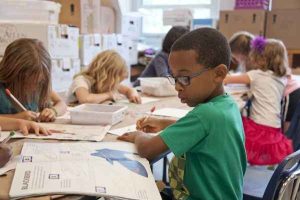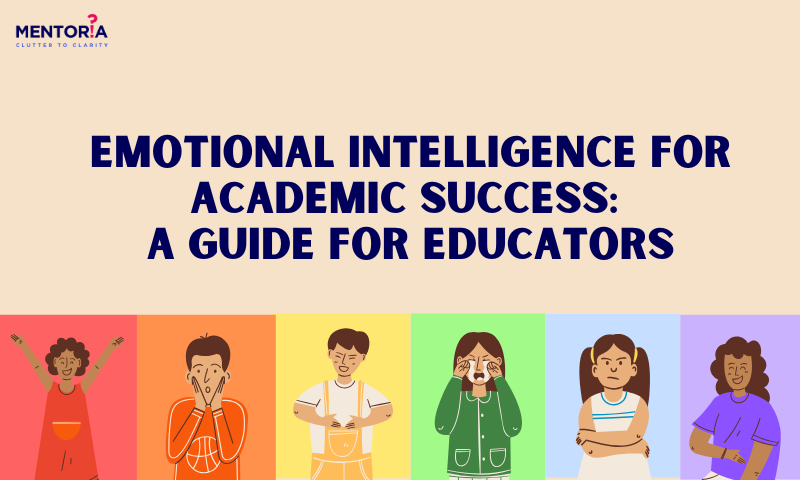The Impact Of School Infrastructure On Your Child’s Development

Jump to Section
Imagine sending your child to a school where the classrooms are bright and welcoming, where the library beckons with shelves of exciting books, and where the playground resounds with laughter. Now, picture another scenario: cramped classrooms, inadequate facilities, and a dreary environment. Which one do you think would nurture your child’s growth and development better?
In this blog, we’re going to embark on a fascinating journey to explore something often underestimated in the world of education: school infrastructure. It’s not just about bricks and mortar; it’s about the foundation upon which your child’s learning experience is built.
From boosting academic performance to encouraging creativity and physical fitness, the impact of school infrastructure on your child’s overall development is profound. We’re going to delve into the numbers, facts, and real-life stories that highlight why investing in a conducive learning environment is key to shaping your child’s future.
The Power Of Inspiring Spaces
The physical environment in which a child learns can significantly impact their educational journey. Bright, spacious, and well-designed classrooms provide an atmosphere conducive to focus and creativity. Studies have shown that students in such environments exhibit increased academic performance, with scores improving by up to 25%.
Natural light and proper ventilation not only contribute to better concentration but also positively affect mood and overall well-being. A clutter-free, organised classroom enhances organisation skills and reduces distractions. For instance, The Shri Ram School, Aravali, situated in Gurgaon, focuses on sustainable development with eco-friendly infrastructure. Their approach enables children to learn about environmental responsibility from an early age.
Moreover, vibrant educational materials on the walls and interactive learning spaces create an immersive learning experience. When a child steps into a classroom that stimulates their curiosity and imagination, they are more likely to engage actively in the learning process, setting the stage for academic success.
Safety First: The Importance Of Secure Facilities
Safety should be a paramount concern for any educational institution. Schools with modern infrastructure prioritise security measures, ensuring the well-being of students. Secure facilities and well-maintained premises significantly reduce the risk of accidents.
Modern schools often employ state-of-the-art surveillance systems, secure entry points, and emergency response protocols. This not only gives parents peace of mind but also allows children to focus on their studies without undue worries about their safety.
Furthermore, secure facilities extend beyond physical safety. They also encompass cyber-security measures to protect students from online threats, reflecting the evolving nature of safety concerns in the digital age.
By prioritising safety, schools create an environment where children can learn and grow without unnecessary fears, fostering a sense of security that is crucial for their overall development.
Technology And Education: A Perfect Partnership
In the digital age, technology plays an integral role in education. Schools with up-to-date infrastructure can seamlessly integrate technology into the curriculum, enhancing the learning experience.
Modern classrooms are equipped with interactive whiteboards, tablets, and computers, allowing students to engage with educational content in innovative ways. This not only makes learning more engaging but also prepares children for a tech-driven future.
Furthermore, access to technology bridges gaps in education. It provides students with resources for independent research and exploration, encouraging critical thinking and problem-solving skills. Moving south, Vidyashilp Academy in Bangalore boasts an infrastructure that promotes holistic development. Their emphasis on a balance between academics, arts, sports, and outdoor activities is reflected in their campus design.
By embracing technology, schools empower students to become tech-savvy individuals ready to navigate the challenges of an increasingly digital world. It’s not just about using gadgets; it’s about leveraging technology to expand the horizons of knowledge.
Healthy Bodies, Healthy Minds: The Role Of Sports Facilities
Physical activity is essential for a child’s growth and development. Schools with excellent sports infrastructure encourage students to stay active, promoting physical fitness and overall well-being.
A well-maintained sports facility offers opportunities for children to engage in a variety of sports and physical activities. This not only helps them stay physically fit but also fosters essential life skills like teamwork, leadership, and perseverance.
Moreover, participating in sports can improve a child’s self-esteem and confidence. Whether it’s scoring a goal on the soccer field or setting a new personal best in a race, these achievements contribute to a positive self-image.
Sports facilities also provide a platform for healthy competition, teaching children how to handle success and failure gracefully. They learn the value of discipline, dedication, and the importance of a balanced lifestyle.
Libraries: Portals To Infinite Worlds
Libraries are often considered the heart of a school. A well-stocked library is a treasure trove of knowledge, fostering a love for reading and exploration. Students in schools with inviting libraries are more likely to develop a lifelong habit of reading.
Libraries provide a quiet, focused space for studying, research, and reflection. They offer a diverse collection of books that cater to various interests and reading levels, encouraging children to explore new subjects and genres. Heading west to Mumbai, Dhirubhai Ambani International School stands out with its state-of-the-art infrastructure. Their campus supports various learning styles and encourages students to excel not only academically but also in extracurricular pursuits.
Furthermore, libraries promote critical thinking and independent learning. Students can delve into topics beyond their regular curriculum, expanding their horizons and enhancing their academic performance.
In addition to physical books, modern school libraries also offer digital resources, making information more accessible and engaging. By providing a stimulating environment for reading and learning, libraries become catalysts for intellectual growth.
Cafeterias: Where Healthy Habits Begin
School cafeterias play a pivotal role in shaping a child’s eating habits. Well-designed cafeterias not only provide nutritious meals but also educate students about the importance of a balanced diet.
Modern school cafeterias prioritise health and nutrition, offering a variety of wholesome meal options. They adhere to strict hygiene standards, ensuring food safety.
By promoting healthy eating habits from a young age, schools contribute to the overall well-being of students. Proper nutrition is essential for physical and cognitive development, and it directly impacts a child’s ability to focus and learn effectively.
Cafeterias also serve as spaces for socialisation, where students can interact with peers and develop important social skills. These interactions contribute to a positive school environment and support emotional growth.
Playgrounds: More Than Just Fun
Playgrounds are not just places for fun; they are essential for a child’s holistic development. Schools with spacious and well-maintained playgrounds provide students with opportunities to develop physical skills, socialise, and foster creativity.
Physical activity on the playground helps children develop motor skills, coordination, and physical fitness. It encourages them to be active and healthy, setting the foundation for a lifelong appreciation of exercise. In the vibrant city of Chennai, The School KFI provides an alternative approach to education with a campus that reflects their commitment to holistic and experiential learning.
Playgrounds also serve as social hubs, where children learn valuable lessons about cooperation, teamwork, and conflict resolution. These interactions contribute to the development of social skills and emotional intelligence. Additionally, playgrounds are spaces where children’s imaginations run wild. They can engage in imaginative play, developing creativity and problem-solving abilities.
Get Help With Your Child’s Development With Mentoria
The impact of school infrastructure on your child’s overall development is undeniable. It goes beyond academics, shaping their physical well-being, creativity, and even their love for learning.
Investing in modern, safe, and well-equipped schools isn’t just about buildings; it’s an investment in your child’s potential. As parents, it’s essential to recognise the profound influence of school infrastructure and advocate for environments that foster the growth of the next generation of thinkers, dreamers, and achievers. After all, the spaces where our children learn are the very foundations of their dreams, aspirations, and success.
We’re here to provide you with all the help! Kick-start your journey with Mentoria and discover the right fit for you. Feel free to call us to speak to our career mentors and choose the right guidance plan that suits your needs.
Mentoria’s career guidance programme enables you to choose your perfect fit from 3 streams, 850+ courses, and 12,000+ careers, and discover what will bring out the best in you.









